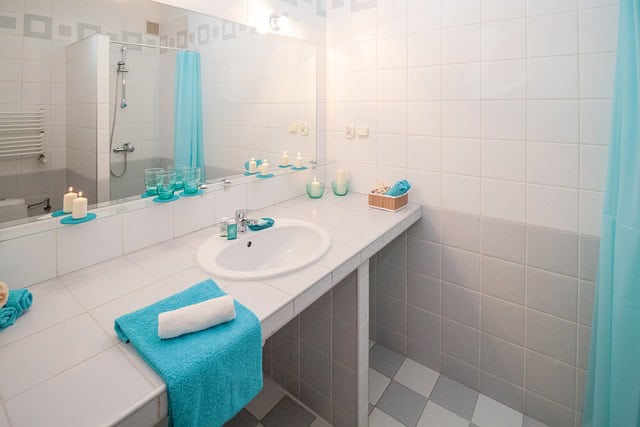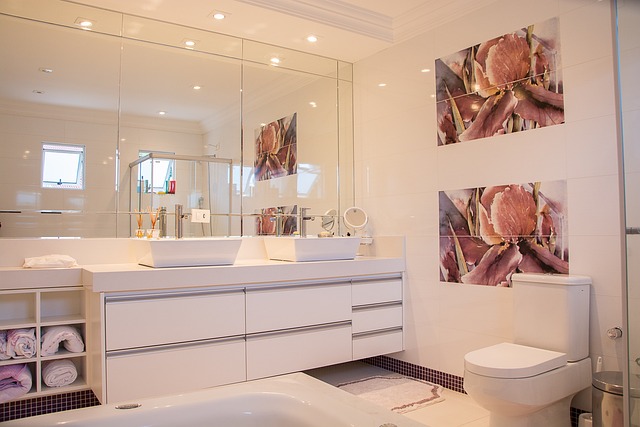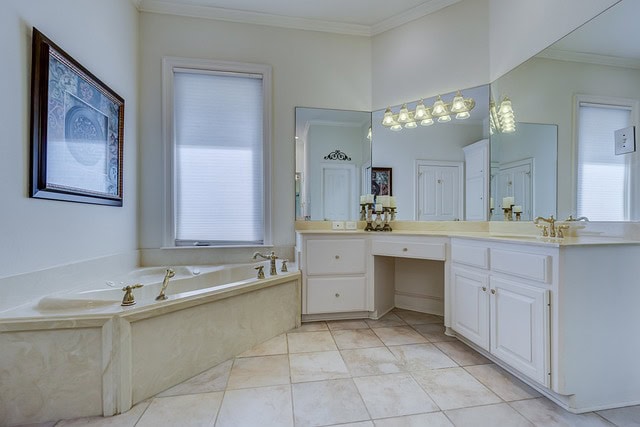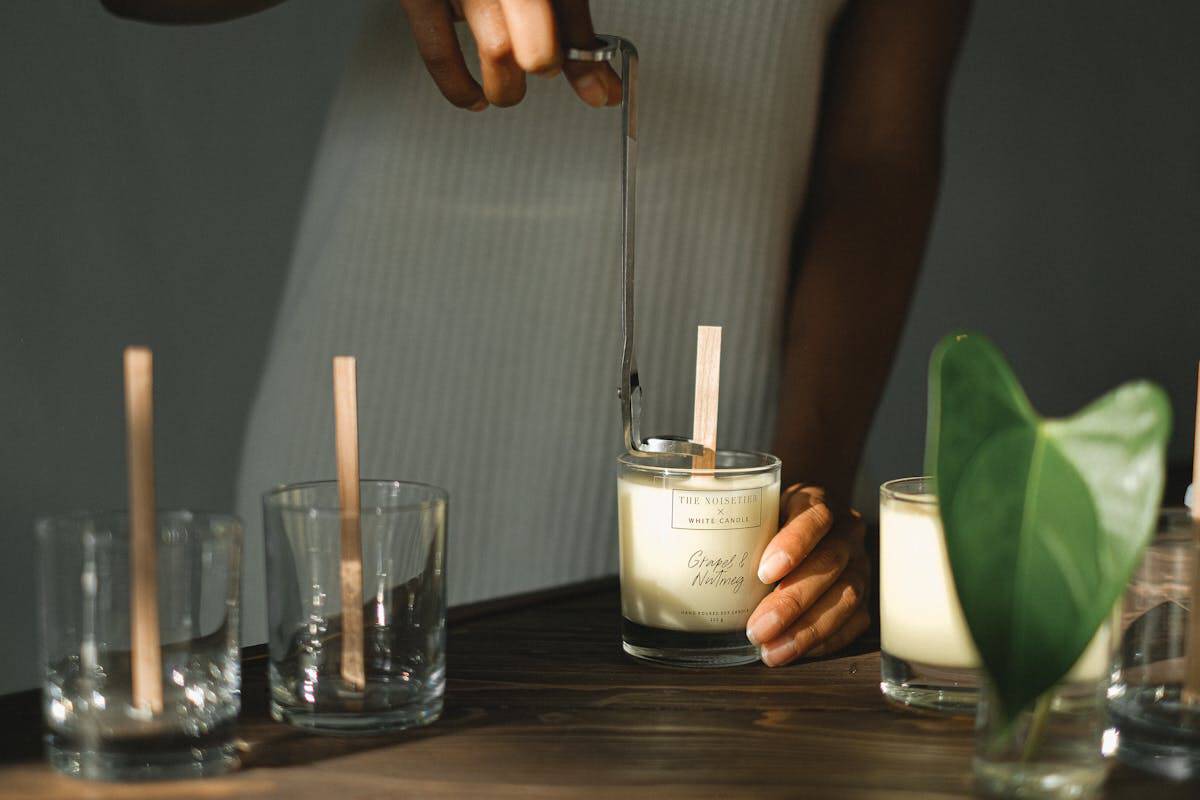Are you ready to transform your bathroom into a personal oasis? This article will provide you with a comprehensive, step-by-step guide to help you tackle a DIY bathroom remodel. Whether you’re looking to update the style, improve functionality, or increase the value of your home, this guide will equip you with the knowledge and confidence to bring your dream bathroom to life.
From essential planning and preparation to plumbing updates, tile installation, fixture selection, and decorative touches, we’ll cover all the critical aspects of a successful bathroom renovation. With a focus on home improvement and DIY home projects, this article will walk you through the process of creating the bathroom design of your dreams.
Table of Contents
Planning Your DIY Bathroom Remodel

Before diving into the hands-on work, it’s crucial to carefully plan your DIY bathroom remodel. Start by setting a realistic bathroom remodel budget that considers material costs, labor (if any), and unexpected expenses. Evaluate your current bathroom layout design and determine if any changes, such as reconfiguring the vanity or relocating the shower, would better suit your needs and preferences.
Setting a Realistic Budget
For your bathroom renovation, you must create a thorough budget to make sure you have the money available to finish the job.Consider the price of labor if you intend to hire contractors for specific jobs, as well as the cost of materials like tiles, fixtures, and finishes.Don’t forget to set aside money for unforeseen costs that can come up during the renovation process.
Choosing a Bathroom Layout
Making a space that better suits your requirements and tastes can be accomplished by assessing the way your bathroom is currently laid out and thinking about possible modifications.Think about where to put the toilet, shower/tub, and vanity, and look at options for rearranging the space to increase storage, improve flow, or improve the room’s overall appearance.
Obtaining Necessary Permits
Before starting your bathroom renovation, it’s important to research and obtain any necessary building permits for bathroom remodel projects required by your local jurisdiction. Complying with building codes and regulations will ensure your project is completed safely and legally, avoiding potential issues or fines down the line.
Preparing the Bathroom for Renovation
Once the planning stage is complete, it’s time to prepare your bathroom for the upcoming renovation. This crucial step involves carefully removing existing fixtures and finishes to create a clean slate for your bathroom demolition project.
Removing Existing Fixtures and Finishes
Begin by meticulously removing any existing fixtures, such as the vanity, toilet, and shower/tub, as well as finishes like tiles, flooring, and wall coverings. This thorough bathroom demolition process will give you a blank canvas to work with, allowing you to address any underlying issues and start fresh with your renovation.
Addressing Any Plumbing or Electrical Issues

While you have access to the exposed surfaces and components, take the opportunity to address any plumbing and electrical updates that may be needed. This is the perfect time to identify and resolve any leaks, outdated wiring, or other problems that could compromise the success of your bathroom renovation preparation. Consulting with a professional plumber or electrician may be advisable to ensure these critical systems are properly addressed.
By meticulously preparing the bathroom for renovation, you’ll set the stage for a smooth and successful transformation, allowing you to tackle the next stages of your DIY bathroom remodel project with confidence.
Updating the Bathroom Plumbing
Upgrading the bathroom plumbing is a crucial step in your DIY bathroom remodel. This may involve replacing outdated bathroom plumbing upgrade pipes, installing new fixtures, or addressing any leaks or drainage problems. Proper plumbing for bathroom remodeling is essential to ensure the long-term functionality and efficiency of your bathroom.
If you’re comfortable tackling plumbing tasks, consider the following DIY plumbing tips to update your bathroom’s plumbing system:
- Inspect and identify any outdated or worn-out pipes, faucets, or drains that need replacement.
- Shut off the main water supply to the bathroom and drain the existing pipes before beginning any work.
- Familiarize yourself with the proper tools and techniques for cutting, connecting, and sealing new pipes.
- Pay close attention to water pressure and drainage to ensure efficient operation of your new plumbing.
- Test all connections for leaks and make any necessary adjustments before completing the project.
If you’re unsure about tackling the plumbing tasks yourself, it’s best to consult with a professional plumber. Improper bathroom plumbing upgrade work can lead to costly water damage or other issues down the line, so it’s essential to ensure the job is done correctly.
DIY Bathroom Remodel: Tile Installation
Tile is a popular and durable choice for bathroom floors and walls, and installing it yourself can be a rewarding DIY project. When it comes to bathroom tile selection, it’s essential to consider factors like water resistance, slip resistance, and aesthetic appeal to ensure the tiles not only look great but also withstand the unique challenges of the bathroom environment.
Preparing the Surfaces for Tiling
The surfaces must be thoroughly prepared before you can start the tile installation process.This entails making certain that the walls and floors are clear of clutter and pre-existing finishes, as well as clean and level. By taking the time to thoroughly prepare the surfaces, you may reduce the likelihood of problems later on and ensure a smooth, even application of the tiles.
Cutting and Laying the Tiles
With the surfaces ready, it’s time to start cutting and laying the tiles. Carefully measure the space and plan the tile layout to achieve the desired pattern and minimize the need for cuts. Use a tile cutter or wet saw to make precise cuts, taking care to maintain the integrity of the tiles. Lay the tiles, ensuring proper alignment and spacing, and use spacers to maintain consistent grout lines.
Grouting and Sealing the Tiles
The final step in the grouting and sealing tiles process is to apply grout and sealant to protect the tiles and create a seamless, waterproof surface. Carefully follow the manufacturer’s instructions for mixing and applying the grout, taking care to fill in all the gaps between the tiles. Once the grout has cured, apply a high-quality sealant to further protect the tiles and prevent water damage or staining.
Installing Bathroom Fixtures and Accessories

With the major structural and surface work completed, it’s time to select and install your new bathroom fixtures and accessories. Choosing the right bathroom vanity, sink, and toilet can elevate the overall design and functionality of your space. Don’t forget to consider thoughtful lighting and ventilation options, such as recessed lights, vanity sconces, and exhaust fans, to enhance the ambiance and improve air quality.
Selecting Vanities, Sinks, and Toilets
Carefully evaluate your bathroom layout and personal preferences to select the perfect vanity, sink, and toilet combination. Look for options that not only complement the aesthetic but also provide the desired storage, countertop space, and water-saving features. Consider the size and scale of your bathroom to ensure a harmonious fit.
Choosing Lighting and Ventilation Options
Proper lighting and ventilation are essential for creating a comfortable and functional bathroom environment. Incorporate a combination of task lighting, such as vanity sconces or recessed lights, and ambient lighting to set the mood. Additionally, ensure adequate ventilation with an efficient exhaust fan to maintain air quality and prevent moisture buildup.
Adding Finishing Touches

Put the finishing touches on your recently renovated bathroom to make it uniquely yours. Choose towel bars, mirrors, and other ornamental pieces that express your style and blend well with the overall scheme. These minor touches have the power to completely transform the area and provide the impression of a well-designed haven.
Painting and Decorating Your New Bathroom
The final step in your DIY bathroom remodel is to add the finishing touches through painting and decorating. Carefully select bathroom paint color ideas that complement the overall design and create the desired mood, whether it’s a soothing, spa-like atmosphere or a vibrant, modern look.
Choosing the Perfect Paint Colors
When it comes to bathroom paint color ideas, consider hues that evoke a calming and relaxing ambiance, such as soft blues, greens, or neutrals. These colors can help create a serene and spa-like feel in your newly remodeled bathroom. Alternatively, if you’re looking for a more energetic and modern aesthetic, explore bolder shades like deep blues, vibrant greens, or even pops of color on an accent wall.
Decorating with Accessories and Artwork
Once you’ve chosen the perfect bathroom paint color ideas, it’s time to add the finishing touches with bathroom decor and accessories. Incorporate textiles like plush towels, cozy rugs, and decorative baskets to inject personality and warmth into the space. Hang artwork, mirrors, or shelves to create visual interest and showcase your style. Remember, the key to successful DIY bathroom decorating is to strike a balance between form and function, creating a space that is both visually appealing and practical for your everyday use.
Conclusion
By following this comprehensive step-by-step guide, you’ve completed your DIY bathroom remodel project. Your hard work and attention to detail have transformed your bathroom into a beautiful, functional space that reflects your style. Remember, the key to a successful DIY bathroom remodel is careful planning, attention to detail, and a willingness to tackle new challenges.
With the right tools, resources, and a bit of determination, you can create the bathroom of your dreams. Whether you’re looking to update the style, improve functionality, or increase the value of your home, this guide has equipped you with the knowledge and confidence to take on your bathroom renovation project.
As you enjoy your newly remodeled oasis, take a moment to appreciate the sense of accomplishment and the personal touch you’ve added to your living space. Home improvement projects, such as this DIY bathroom remodel, not only enhance the aesthetic and functionality of your home but also foster a deeper connection to your surroundings. Embrace the satisfaction of creating a space that truly reflects your unique style and preferences.
What is the purpose of this DIY bathroom remodel guide?
This step-by-step guide aims to provide you with the necessary information and confidence to transform your bathroom into a personal oasis through a DIY bathroom remodel. The guide covers essential planning, preparation, plumbing updates, tile installation, fixture selection, and decorative touches to elevate your bathroom space.
How do I set a realistic budget for my DIY bathroom remodel?
To set a realistic budget, you should consider the costs of materials, labor (if any), and potential unexpected expenses. Evaluate your current bathroom layout and determine if any changes, such as reconfiguring the vanity or relocating the shower, would better suit your needs and preferences.
What permits do I need to obtain for my DIY bathroom remodel?
Research and obtain any necessary permits required by your local jurisdiction to ensure your project complies with building codes and regulations. This step is crucial to avoid any legal or safety issues during your DIY bathroom remodel.
How do I prepare the bathroom for the renovation?
Begin the preparation by carefully removing any existing fixtures, such as the vanity, toilet, and shower/tub, as well as finishes like tiles, flooring, and wall coverings. This will give you a clean slate to work with. Additionally, take the opportunity to address any underlying plumbing or electrical issues that may need attention before moving forward with the renovation.
What factors should I consider when selecting bathroom tiles?
When selecting bathroom tiles, consider factors like water resistance, slip resistance, and aesthetic appeal. Prepare the surfaces by ensuring they are clean, level, and free of any debris or existing finishes before carefully measuring, cutting, and laying the tiles. Finish the process by applying grout and sealant to protect the tiles and create a seamless, waterproof surface.
How do I choose the right bathroom fixtures and accessories?
When selecting bathroom fixtures and accessories, choose a vanity, sink, and toilet that complement the overall design and provide the desired functionality. Consider lighting and ventilation options, such as recessed lights, vanity sconces, and exhaust fans, to enhance the ambiance and improve air quality. Add the finishing touches with accessories like mirrors, towel bars, and decorative elements to personalize your newly remodeled bathroom.
What are some tips for painting and decorating my new bathroom?
Carefully select paint colors that complement the overall design and create the desired mood, whether it’s a soothing, spa-like atmosphere or a vibrant, modern look. Incorporate decorative accessories, such as towels, rugs, and artwork, to personalize the space and bring your vision to life.

